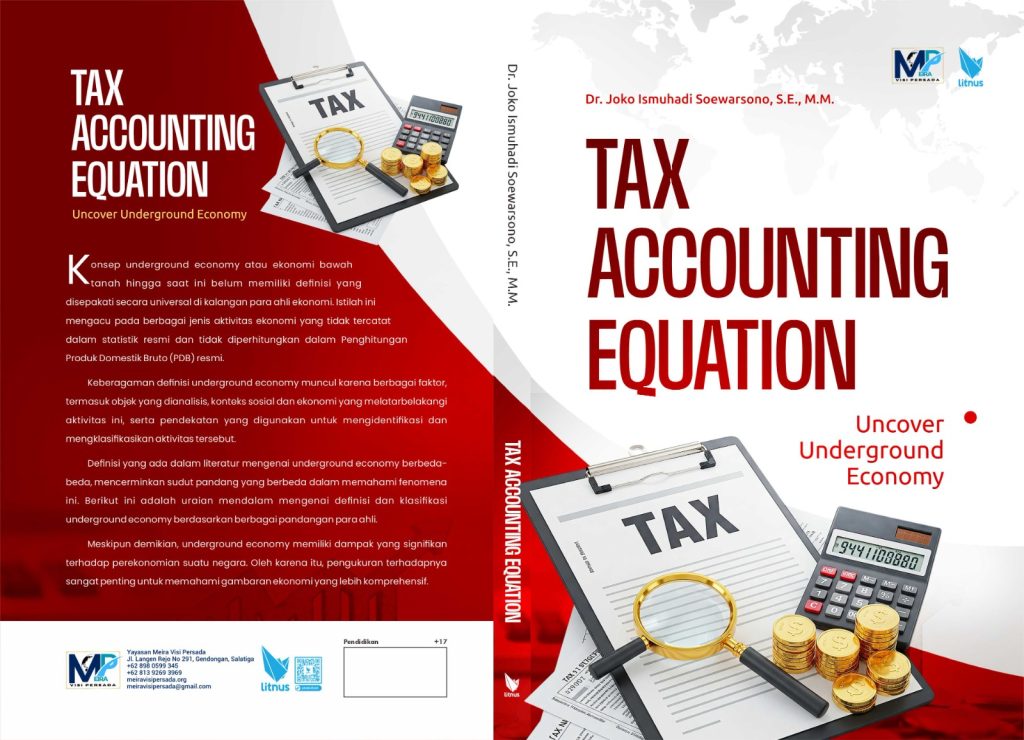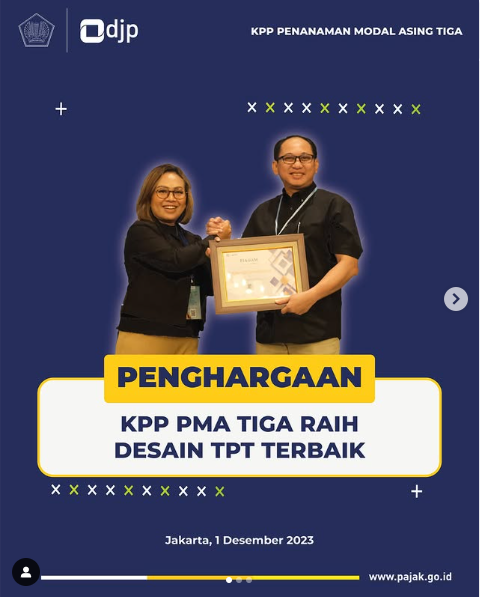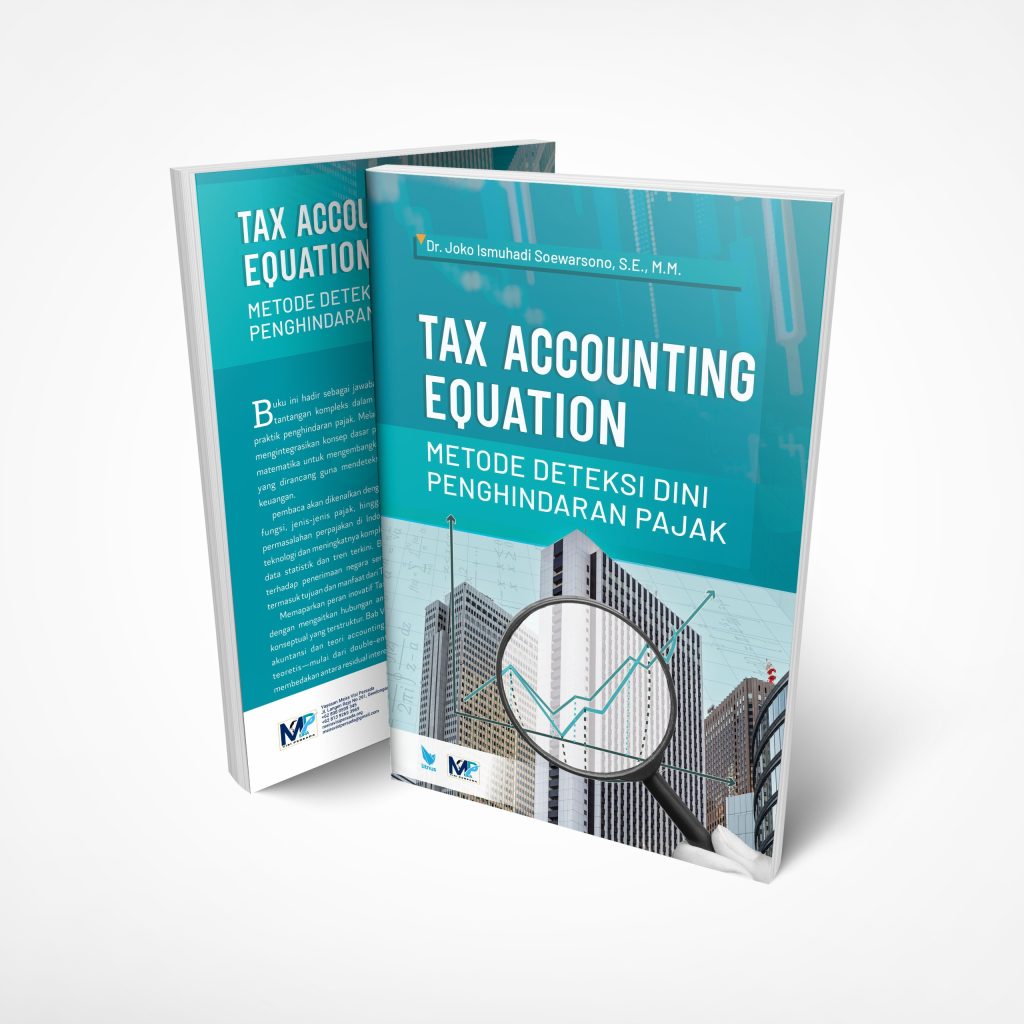
The Tax Accounting Equation and the Potential for a Withholding Tax on Consumption
- Ekonomi
Wednesday, 16 April 2025 06:06 WIB
Jakarta, fiskusnews.com:
1. Introduction: Bridging Accounting Principles and Tax Policy
The foundation of financial accounting rests upon the Tax Accounting Equation (TAE), expressed as Assets (A) = Liabilities (L) + Equity (E). This equation serves as the bedrock of the double-entry accounting system, a methodology that ensures a continuous balance between a company’s resources (assets) and the sources of their financing (liabilities and equity). The TAE is a fundamental tool for understanding the financial health of an entity at any given point in time, offering a clear snapshot of what an entity possesses and what it owes to others. It is often the initial concept introduced in accounting education, highlighting the core relationship between an entity’s assets, liabilities, and the owners’ stake. The integrity of this equation is maintained through the principles of debit and credit, where every financial transaction necessitates corresponding entries to ensure the equation remains in equilibrium. Assets represent the valuable resources under the control of a company, while liabilities signify its obligations to external parties, and equity reflects the residual interest or ownership stake in those assets.
While traditionally applied within the realm of business accounting, the fundamental principle of balance inherent in the TAE offers a compelling lens through which to examine tax policy. This report explores the concept of extending the logic of the TAE to the domain of taxation, specifically by considering the implementation of a withholding tax on consumption. This idea is predicated on the notion that just as income generation increases an entity’s financial capacity (reflected in the equity component), the utilization of these resources through consumption represents a decrease in available resources. By drawing parallels to the established mechanism of income tax withholding, this analysis will delve into the theoretical underpinnings, potential implementation strategies, arguments for and against, and broader implications of such a system for tax policy and revenue collection. The report aims to provide a comprehensive, expert-level analysis of this novel concept, bridging the gap between fundamental accounting principles and innovative tax policy considerations.
2. Deconstructing the Tax Accounting Equation
The Tax Accounting Equation, Assets (A) = Liabilities (L) + Equity (E), is composed of three key elements that provide a framework for understanding an entity’s financial position. Assets encompass all tangible and intangible resources that a taxpayer controls and that possess economic value. These can include liquid assets like cash and cash equivalents, accounts receivable representing money owed by customers, inventory held for sale, long-term assets such as property, plant, and equipment used in operations, investments in other entities, and intangible assets like patents, trademarks, and goodwill that provide future economic benefits. Assets are essentially the items of value that a business or individual owns and expects to generate future economic benefits.
Liabilities represent the obligations or debts that a taxpayer owes to external parties. These can include short-term obligations like accounts payable (money owed to suppliers), salaries payable, and taxes payable, as well as long-term debts such as loans, mortgages, and deferred revenue (payments received for services or goods not yet provided). Liabilities are the financial obligations of the entity to its creditors, encompassing individuals, other companies, and governmental bodies.
Equity is the residual interest in the assets of the taxpayer after deducting all liabilities. Depending on the type of entity, equity may be referred to as Owner’s Equity (for sole proprietorships and partnerships) or Shareholders’ Equity (for corporations). It represents the owners’ initial investment in the company along with any accumulated profits that have not been distributed as dividends, known as retained earnings. Equity can also be simply calculated by subtracting total liabilities from total assets.
The TAE serves as a fundamental tool for understanding a taxpayer’s financial position by providing a snapshot of their financial health at a specific point in time. This financial picture is often presented in the balance sheet, one of the primary financial statements. The equation highlights how a taxpayer’s resources (assets) are financed, either through borrowing (liabilities) or through the owner’s investment (equity). Indeed, every asset that an entity possesses is funded by either a liability or an element of equity. For a more dynamic understanding, the expanded accounting equation, Assets = Liabilities + Owner’s Capital + (Revenues – Expenses – Withdrawals), incorporates income and expenses, revealing how operational activities and the decisions of owners influence the equity component over a period. Revenues generated by the entity increase its retained earnings, thereby boosting equity, while expenses incurred and withdrawals made by the owners decrease equity.
The work of Dr. Joko Ismuhadi provides a direct application of TAE principles to the realm of taxation, particularly within the Indonesian context. His concept of the “Tax Accounting Equation” (TAE) serves as a forensic tool designed for the analysis of Indonesian tax matters, with the potential for early detection of tax avoidance and evasion. This approach aims to combat financial crime within the corporate sector by uncovering practices of tax manipulation and money laundering. Dr. Ismuhadi’s methodology involves analyzing financial reports to identify discrepancies that could indicate potential tax evasion or involvement in the underground economy. His research explores the capacity of the TAE to aid in the management of taxation related to activities within the underground economy. Dr. Ismuhadi’s work appears to extend both the basic and expanded accounting equations, tailoring them specifically to address tax-related implications, potentially through a modified equation such as TAE: Asset + Expenses = Liabilities + Revenue. This specific formulation underscores the relationship between revenue, expenses, assets, and liabilities from a tax perspective.
3. The Established Mechanism: Income Tax Withholding
A withholding tax is a fundamental mechanism employed by governments to collect taxes, wherein the payer of income is legally obligated to deduct a certain portion of the income before it is disbursed to the recipient. This system, often referred to as pay-as-you-earn (PAYE) or tax deduction at source, ensures that tax obligations are met progressively throughout the income-earning period. While primarily applied to employment income in the form of wages and salaries, income tax withholding can also extend to various other income streams, including interest earned on savings, dividends from investments, rental income, royalty payments for intellectual property, pension distributions, bonuses received from employers, and even winnings from gambling activities. Furthermore, many jurisdictions utilize withholding taxes on payments made to non-residents for income generated within their borders.
The rationale underpinning income tax withholding is multifaceted. Firstly, it ensures a consistent and predictable flow of tax revenue to the government throughout the fiscal year. This steady income stream facilitates effective government budgeting and financial planning. Secondly, withholding significantly enhances tax compliance rates. By collecting taxes at the point where income is generated, it reduces the opportunities for taxpayers to underreport their earnings or to evade their tax obligations when filing their annual returns. This system compels taxpayers to adhere to their tax responsibilities on a regular basis. Thirdly, income tax withholding simplifies the tax payment process for individual taxpayers. Instead of having to accumulate funds and make potentially large lump-sum tax payments, individuals have their tax liabilities addressed incrementally with each paycheck. This alignment of tax payments with income receipt helps prevent significant underpayments or overpayments at the year’s end.
The mechanics of income tax withholding typically involve the use of forms, such as the W-4 (Employee’s Withholding Allowance Certificate in the United States), which employees complete to indicate their filing status (e.g., single, married), and any allowances or deductions they are claiming. Employers then utilize this information, along with withholding tables or formulas provided by the relevant tax authorities, to calculate the specific amount of tax to deduct from each employee’s paycheck. Employees have the option to adjust their withholding at any time by submitting a revised W-4 form if their personal or financial circumstances change. The overarching objective of this system is to ensure that the total amount of tax withheld throughout the year closely approximates the employee’s actual tax liability for that period.
4. Conceptualizing Consumption Withholding: A Theoretical Extension
The concept of a withholding tax on consumption represents a theoretical extension of established tax principles, drawing inspiration from the fundamental Tax Accounting Equation and the successful implementation of income tax withholding. This novel approach posits that just as income generation enhances a taxpayer’s financial capacity and ability to pay tax (reflected as an increase in the equity component of the TAE), the subsequent act of consumption diminishes these resources, suggesting a potential point for tax consideration.
Consumption as a Reduction of Taxable Capacity: When a taxpayer earns income, their overall financial standing improves, which can be viewed as an increase in the “Equity” portion of the TAE, indicating a greater capacity to meet tax obligations. However, when this income is utilized for consumption, the taxpayer’s net accumulation of wealth or readily available resources decreases. This expenditure can be seen as a flow of value out of the “Asset” side of the TAE, particularly affecting liquid assets like cash, or potentially leading to an increase in “Liabilities” if purchases are made on credit. Regardless, immediate consumption may not result in a proportional increase in overall “Equity” compared to the initial income earned. Consequently, resources directed towards consumption are no longer available for future taxation within systems focused on wealth accumulation or income generation.
The Flow of Value: While the TAE provides a valuable snapshot of a taxpayer’s financial position at a specific moment in time, economic activity is inherently a dynamic process that unfolds over a period. Consumption represents a continuous outflow of economic value from a taxpayer to the market in exchange for goods and services. Taxing this outflow at the point when the transaction occurs could offer a more direct and contemporaneous reflection of economic activity and the realization of economic benefit derived from the use of resources.
Mirroring Income Withholding: The logic behind income tax withholding is that tax liability is recognized and addressed at the point when income is earned. Extending this principle to consumption suggests that economic benefit is also realized when those resources are used to acquire goods and services. Therefore, a consumption withholding tax could operate as a mirror image of income withholding, capturing a small portion of tax as resources are expended, aligning tax collection with the moment of economic benefit derived from consumption.
Broadening the Tax Base: The TAE underscores the interconnectedness of a taxpayer’s assets, liabilities, and equity. Focusing solely on income as the primary basis for taxation might overlook a significant portion of economic activity. Individuals with substantial accumulated wealth, for instance, might have relatively low current income but engage in significant consumption, funded by drawing down their assets or through borrowing. A withholding tax on consumption could broaden the tax base by capturing economic activity represented by spending, irrespective of the original source of the funds, be it current income, past savings, loans, or other non-income sources. This approach could lead to a more comprehensive and potentially more equitable tax system.
5. Potential Mechanisms for a Consumption Withholding System
Implementing a withholding tax on consumption would require careful consideration of the mechanisms used to collect the tax at the point of transaction. Several potential approaches could be explored, each with its own set of benefits and challenges.
One possibility is withholding at the point of retail sale. This would involve businesses acting as withholding agents, deducting a small percentage from the total purchase amount for most goods and services and remitting it to the tax authorities. This mechanism would be analogous to the current operation of sales tax, but instead of being a final tax, it would function as a prepayment or withholding. However, implementing such a system across all types of retail transactions, especially for very small businesses or informal sectors, could prove complex and might necessitate significant upgrades to point-of-sale systems and accounting practices. Public acceptance could also be a hurdle due to the immediate increase in the cost of goods and services at the time of purchase.
Another potential mechanism could involve withholding on financial transactions. Financial institutions could be mandated to withhold a small percentage on certain types of expenditures made through electronic means, such as credit card and debit card transactions, particularly for purchases exceeding a certain threshold. This approach would leverage existing financial infrastructure and technology, potentially easing the burden on individual retailers. However, it might not capture all forms of consumption, especially cash transactions, which remain prevalent in many economies. Defining the appropriate threshold and the specific types of transactions subject to withholding would also be crucial and potentially intricate.
Withholding on digital platforms presents another viable option. Online retailers and service providers could be required to integrate withholding mechanisms into their payment processes, similar to how they often handle sales tax for online purchases. Given the increasing prevalence of online consumption, this could capture a significant portion of economic activity. However, ensuring compliance for cross-border digital transactions would necessitate international cooperation and agreements. Defining the scope of what constitutes a digital platform for tax purposes would also be essential.
The feasibility of a consumption withholding system would be significantly enhanced by leveraging technological advancements in digital payment systems and real-time transaction reporting. Real-time reporting of consumption transactions, potentially facilitated by digital payment platforms, could streamline the withholding process and improve overall compliance by providing tax authorities with immediate data on spending. Digital payment systems themselves can automate the withholding of tax at the moment of transaction, reducing the administrative burden on businesses and enhancing accuracy. However, widespread adoption of digital payment methods would be necessary, and concerns regarding digital access and financial inclusion across all segments of the population would need to be addressed.
Finally, the rate structure of a consumption withholding tax could vary. A flat, low rate applied uniformly to most consumption could offer simplicity. Alternatively, tiered rates could be considered, with essential goods potentially subject to a lower or zero rate, while luxury items and non-essential services could be taxed at a higher rate. This could be a way to mitigate concerns about the potential regressivity of a consumption tax.
6. Arguments in Favor of Consumption Withholding
The implementation of a withholding tax on consumption presents several potential benefits that warrant consideration.
One significant advantage lies in broadening the tax base. Consumption represents a substantial portion of overall economic activity that is not always fully captured by income-based taxation [User Query]. Individuals with considerable wealth might report relatively low taxable income, and the informal or underground economy often involves significant levels of consumption that evade income tax. A consumption tax, particularly one with a broad base, could provide a more comprehensive measure of economic activity, potentially leading to increased overall tax revenue and the possibility of lower tax rates across the board. By taxing spending, it captures economic activity funded from diverse sources, including savings, borrowing, and income that might have previously escaped taxation.
Another key benefit is the potential for facilitating real-time tax collection. Withholding tax at the point of consumption would allow for a more consistent and timely flow of tax revenue to the government. This contrasts with the current system where tax payments often occur with a significant time lag, typically on an annual or quarterly basis for estimated taxes. A real-time collection system could provide governments with more predictable revenue streams throughout the year, enabling more effective financial planning and potentially more agile responses to economic fluctuations.
A consumption withholding tax could also be effective in capturing economic activity beyond income. Individuals who possess substantial wealth but report low current income, such as those living off accumulated assets or utilizing loans, would still contribute to the tax base through their expenditures on goods and services. This could address concerns regarding fairness in the tax system and the distribution of the tax burden, ensuring that those who utilize significant economic resources through their consumption contribute to public finances, regardless of their current income levels.
Furthermore, a consumption withholding tax mirrors the “pay-as-you-go” principle that underpins the current income tax system. By extending this logic to consumption, tax payment would be aligned more directly with the enjoyment of goods and services, creating a more immediate and transparent link between economic benefit and tax contribution.
Finally, there is the potential for reduced tax evasion. It could be argued that evading a small withholding tax applied to numerous, dispersed consumption transactions might be more challenging than evading income tax, which is often calculated and reported on a more aggregated, lump-sum basis [User Query]. Dr. Ismuhadi’s work on leveraging accounting equations for forensic tax analysis in Indonesia suggests that inconsistencies between reported income and observed consumption patterns, which a consumption withholding system could help track, might serve as indicators of hidden economic activity and potential tax evasion.
7. Challenges and Arguments Against Consumption Withholding
Despite the potential benefits, the implementation of a withholding tax on consumption would undoubtedly face several significant challenges and raise valid arguments against its adoption.
A primary concern is the issue of regressivity. Consumption taxes, in general, are often criticized for disproportionately affecting lower-income individuals and households. This is because lower-income individuals tend to spend a larger percentage of their income on essential goods and services compared to higher-income individuals, who save a greater portion. A withholding tax on consumption, if applied broadly, could exacerbate this issue by increasing the immediate cost of necessities. Mitigation strategies, such as exempting essential goods like food and healthcare , or providing targeted rebates or allowances to low-income individuals , would need careful consideration to offset this regressive impact. Implementing tiered tax rates, with lower or zero rates for necessities, could also be explored.
The administrative burden associated with a consumption withholding tax is another significant challenge. Requiring businesses, potentially of all sizes, to withhold and remit a small percentage of tax on every transaction could lead to a substantial increase in compliance costs and complexity, particularly for small businesses with limited resources. While existing sales tax systems also operate at the point of sale, adding a separate withholding layer could further complicate matters. Unlike income tax withholding, which is primarily managed by employers, a consumption withholding system could involve a far greater number of withholding agents, potentially every entity selling goods or services.
Concerns also exist regarding the potential impact on consumer behavior. A consumption withholding tax could lead to a decrease in overall spending, potentially hindering economic growth. Even a small percentage increase in the price of goods and services at the point of purchase could prompt consumers to reduce their discretionary spending. The extent of this impact might vary depending on whether the consumption is of necessities or discretionary items.
Furthermore, a consumption withholding tax could lead to economic distortions in consumption patterns. Consumers might be incentivized to shift their spending towards goods and services that are harder to tax (e.g., transactions in the informal economy, barter arrangements) or that are specifically exempt from the tax. This could lead to unintended consequences and undermine the overall effectiveness of the tax.
Public acceptance and political feasibility represent another major hurdle. The introduction of a new tax, especially one that is directly visible at the point of every transaction, could face significant public resistance. Consumers might perceive it as an additional tax burden on top of existing income and sales taxes. Implementing such a fundamental shift in the tax system would likely be politically challenging, requiring broad consensus and effective communication to the public.
Finally, the interaction with existing sales taxes and VAT systems needs careful consideration. In the United States, a federal consumption withholding tax would need to be integrated with existing state and local sales taxes. Would it replace these taxes, or would it function as an additional layer? Coordinating tax collection and administration across different levels of government could be complex. In countries that already have a Value Added Tax (VAT) system , a consumption withholding tax might share similarities with the VAT, which is a tax on consumption collected at each stage of production. However, the specific mechanisms and administrative requirements of a withholding tax would need to be carefully designed to avoid redundancy or conflicts with existing VAT structures. The Indonesian tax system, with its Value Added Tax (VAT) and Luxury Goods Sales Tax (LGST) , provides an example of a multi-layered consumption tax system, highlighting the complexities of integrating a new withholding mechanism.
8. The Dynamics of Value Flow and the Tax Accounting Equation
While the Tax Accounting Equation (TAE) provides a valuable snapshot of a taxpayer’s financial standing at a specific point in time , it is crucial to recognize that economic activity, including consumption, is a continuous process that unfolds over time. The TAE captures a static equilibrium, but the reality of a taxpayer’s financial life involves a constant flow of value.
Consumption can be understood as a dynamic process that continuously impacts the “Asset” and “Liability” sides of the TAE. With each purchase, a taxpayer’s liquid assets, such as cash, decrease. Conversely, if consumption is financed through credit, it leads to a corresponding increase in liabilities. This ongoing cycle of spending and acquiring goods and services represents a constant movement of value within the taxpayer’s financial landscape.
Over a given period, income generation typically leads to an increase in the “Equity” component of the TAE, either through retained earnings in a business context or through personal savings for an individual. Conversely, consumption acts as a counterforce, decreasing equity by reducing assets or increasing liabilities without a directly offsetting increase in income during the same period. This interplay between income and consumption continuously alters the balance of the TAE, reflecting the taxpayer’s evolving financial position.
A withholding tax on consumption could serve as a mechanism to capture a fraction of this continuous outflow of value in real-time. By taxing consumption at the point of transaction, the tax system could gain a more dynamic and immediate reflection of economic activity, moving beyond a sole reliance on income as the primary indicator of taxable capacity. This approach would acknowledge the economic benefit that taxpayers derive from the utilization of resources, aligning tax collection more closely with the actual use of economic value.
Dr. Ismuhadi’s work, which focuses on applying the TAE for forensic tax analysis and investigating the underground economy in Indonesia , likely involves a dynamic interpretation of the TAE. By analyzing changes in the relationship between assets, liabilities, and equity over time, particularly in relation to reported income, discrepancies that might suggest hidden economic activity or tax avoidance could be identified. Consumption patterns, as a key driver of these dynamic changes, would likely play a significant role in such an analysis.
9. Broadening the Tax Base: Consumption as a Key Economic Indicator
A tax system that focuses exclusively on income as its base may inadvertently overlook a significant portion of overall economic activity. Individuals and entities can access resources for consumption through various channels that do not necessarily involve the generation of taxable income within the same period. For instance, accumulated savings from prior periods, loans and credit facilities, and non-taxable transfers such as gifts or inheritances can all fund current consumption expenditures.
A consumption tax, by its very nature, broadens the tax base by encompassing spending on goods and services, irrespective of the original source of the funds. This ensures that economic activity, as manifested in the purchase of goods and services, is subject to taxation, providing a more comprehensive reflection of economic resource utilization.
This broadened tax base can potentially lead to a more equitable distribution of the tax burden across the population. Under a consumption tax, everyone who engages in consumption would contribute to public finances, regardless of their current income level. This could be particularly relevant in addressing situations where individuals with substantial wealth but relatively low reported income might otherwise bear a lower tax burden under an income-centric system.
The work of Dr. Ismuhadi on the Tax Accounting Equation’s application in Indonesia highlights the potential of analyzing the relationship between different components of the TAE to uncover hidden economic activity. Discrepancies between reported income or wealth and observed levels of consumption, which a consumption withholding system could help to track more directly, might serve as indicators of undeclared income or other forms of economic activity that currently evade taxation.
10. Real-Time Tax Collection: Benefits and Practical Considerations
The implementation of a consumption withholding system offers the potential for real-time tax collection, which could bring about several advantages for governments and the economy. One key benefit is the establishment of a more immediate and consistent stream of tax revenue for the government. This could lead to improved accuracy in budget forecasting and provide greater flexibility for governments to respond to economic changes through fiscal policy adjustments.
Furthermore, real-time collection could potentially reduce the necessity for large annual tax settlements or refunds. This could alleviate the administrative burden associated with processing millions of tax returns annually and could also mitigate cash flow challenges that some taxpayers might face when required to make significant tax payments.
The granular data on consumption patterns generated by a real-time withholding system could also be highly valuable for economic monitoring and analysis. Governments and economic researchers could gain more timely insights into consumer behavior, spending trends, and the overall health of the economy, allowing for more informed policy decisions.
However, the realization of these benefits is contingent upon addressing several practical considerations and technological requirements. A robust and widely accessible digital infrastructure, coupled with efficient digital payment systems, would be essential to facilitate real-time withholding and reporting across a vast number of transactions. This necessitates bridging the digital divide and ensuring that all segments of the population have access to the necessary technology.
Concerns regarding the privacy of individual consumption data would also need to be carefully addressed. Real-time tracking of spending habits could raise significant privacy issues, and robust data security and privacy safeguards would be paramount to maintain public trust.
Ensuring the accuracy of withholding and minimizing errors across a high volume of transactions would be another critical challenge. This might require the development of sophisticated technological solutions and the establishment of clear and user-friendly guidelines for businesses acting as withholding agents.
Adapting existing tax administration systems, many of which are designed for periodic reporting, to effectively process and manage real-time transaction data would represent a substantial undertaking. Modernization of information technology infrastructure would likely be a prerequisite for successful implementation.
The experiences of other countries that have implemented real-time reporting initiatives or operate comprehensive VAT systems could provide valuable lessons and insights into potential implementation strategies, common challenges, and best practices to consider.
11. Conclusion: Towards a More Comprehensive and Dynamic Tax System?
In conclusion, the concept of a withholding tax on consumption, drawing inspiration from the fundamental principles of the Tax Accounting Equation, presents a compelling yet complex proposition for tax policy innovation. By viewing consumption as a key outflow of economic value that dynamically impacts a taxpayer’s financial position, this approach offers a theoretical basis for a more comprehensive and temporally aligned system of taxation.
The potential benefits of a consumption withholding tax are noteworthy. It holds the promise of broadening the tax base, capturing economic activity that might otherwise be missed by income-centric systems, and facilitating a more immediate and consistent flow of revenue to governments through real-time collection. Furthermore, it aligns with the “pay-as-you-go” principle familiar to taxpayers through income tax withholding and could potentially reduce opportunities for tax evasion.
However, the implementation of such a system is fraught with significant challenges. Concerns about the potential for regressivity, particularly affecting lower-income populations, must be carefully addressed through thoughtful design, such as exemptions for necessities or targeted relief measures. The administrative burden on businesses, especially small enterprises, could be substantial and would require streamlined processes and technological solutions. Public acceptance and the political feasibility of such a fundamental tax reform also remain critical considerations. Moreover, the integration of a consumption withholding tax with existing consumption tax systems at various levels of government would demand thorough analysis and coordination.
Ultimately, while a consumption withholding tax offers a conceptually sound extension of accounting principles into tax policy, its practical implementation requires navigating a complex landscape of economic, social, and technological considerations. Further in-depth research is essential to model the potential economic impacts, explore specific and efficient implementation mechanisms, investigate public perceptions, and assess the overall political viability of such a transformative tax reform. This includes a thorough examination of international experiences with similar consumption tax systems and real-time reporting in@fiskusnews.com.
Reporter: Marshanda Gita – Pertapsi Muda

Share
Berita Lainnya
Uncovering Underground Economy Activity in Indonesia
Uncovering Underground Economy Activity: An Analysis of Dr. Joko Ismuhadi’s Tax Accounting Equation
Webinar “Outlook Perpajakan Tahun 2025 & Kontribusinya terhadap Pembangunan Nasional yang Berkelanjutan”
Korupsi Korporasi di bidang Perpajakan, Apa Itu?
digitAl-Capone: Cara Afdol Berantas Judol
KOMISI (Kelas Online akadeMISI) Seri Teori Pajak I Episode 6 bertajuk Pemahaman dan Penghitungan PPh Pasal 25
Spesial Webinar: Mendeteksi The Impact Of Errors Pembuatan Laporan Keuangan Terhadap Pelaporan SPT Badan
Rekomendasi untuk Anda

Berita Terbaru
Eksplor lebih dalam berita dan program khas fiskusnews.com
Tag Terpopuler
# #TAE
# #TAX ACCOUNTING EQUATION
# #TAX FRAUD
# #TAX EVASION














